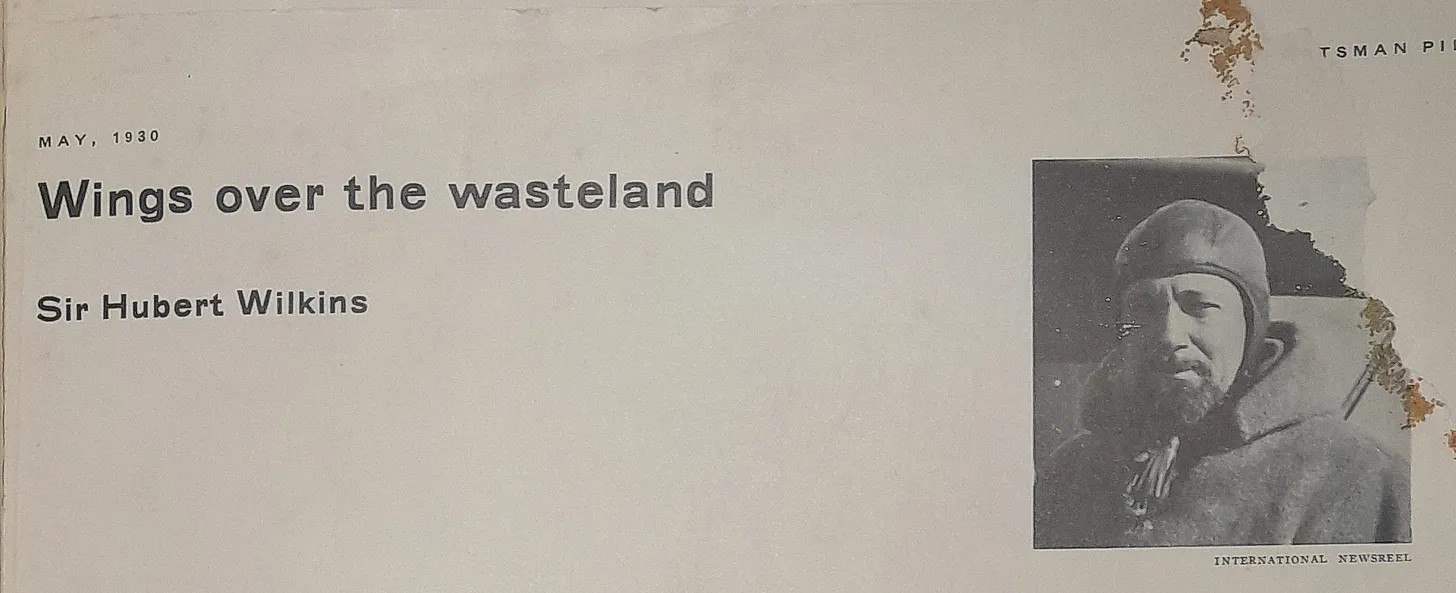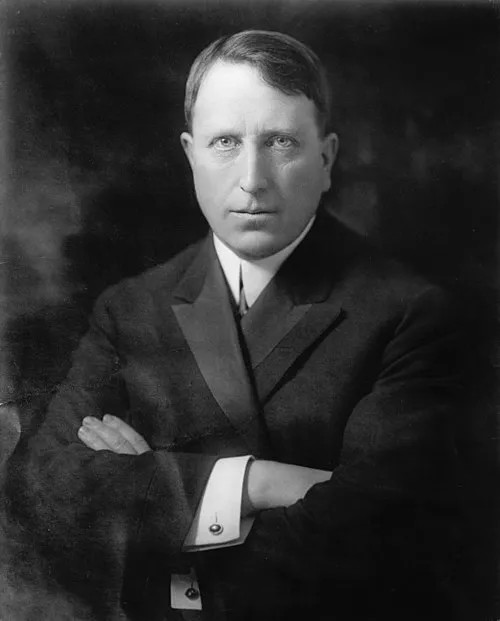— HISTORY CORNER —
William Randolph Hearst and the King
by Dr. Marissa Grunes

Virginian Richard E. Byrd and pilot Floyd Bennett had just made the first flight over the North Pole (maybe). Naturally the South Pole was next.
The North Pole flight had been a race against two other formidable men: the monarch of polar exploration Roald Amundsen and a scrappy young Australian named George Hubert Wilkins.

Amundsen made the only thoroughly-documented trip and Wilkins went furthest, flying over 21 hours from Alaska to Svalbard. But Byrd won the race.
Now a national hero, Byrd looked forward to an open field in the Antarctic.
Then came an announcement in the New York Journal: Byrd wouldn’t be alone. Wilkins was coming for him. And he was bankrolled by a man who happened to own the New York Journal, Mr. Hearst himself.
What better way to sell papers? Wilkins was the underdog—a farmboy from hardscrabble Australia, without the benefit of Byrd’s extensive political connections and camera-ready charm. Never mind that Wilkins had been knighted and that Byrd always struggled to find financing. The race was on.

The aviators wanted adventure and (presumably) glory. Hearst and his rival the New York Times wanted to sell papers. But the American, Australian, and British governments had a different concern. Byrd and Wilkins would discover new lands…who would claim them?
Wilkins was in an especially delicate position. He was Australian, his backer was American, and he’d be flying from a base claimed by Britain.
“Do you intend to drop British or Australian flags at intervals along the coastline[…]?” an Australian diplomat asked Wilkins. “It would add very considerable complications to the Antarctic complex if [Byrd] were to scatter American flags about. But I don’t suppose the Americans have any Antarctic aspirations. It is rather out of the line of their country.”
The Brits weren’t taking chances. A few weeks after Wilkins arrived in the southern hemisphere, a declaration was issued by the Governor of the Falkland Islands—a successor to the one who arrested Wilkins years earlier—authorizing CAPTAIN SIR HUBERT WILKINS, KNIGHT, to “receive possession in the name of His Britannic Majesty of any land or island which he may discover” from his base to the Pole.

On November 22, 1928, Wilkins took off. He and pilot Ben Eielson flew the same Lockheed Vega that had taken them across the Arctic Sea. It was the first Antarctic flight in history.
Wilkins didn’t bag the Pole that year. But he discovered new land, and dutifully dropped a flag in the name of King George V of Britain. Of course, he knew which side his bread was buttered. He named most of it Hearst Land.

Byrd was wintering in Antarctica to prepare for a South Polar flight the next year. On July 15, 1929, just after midwinter, Byrd’s men heard a radio transmission from their old enemy.
Wilkins was coming back. For King, for Country, and for William Randolph Hearst.
Ever wondered what a Royal telegram looks like? Here’s a snippet. See you tomorrow!

This post is indebted to a wonderful book on the aviation races to both Poles, Wings of Ice by Jeff Maynard—who, incidentally, has spent untold hours in the Byrd Polar and Climate Research Center Archives.
